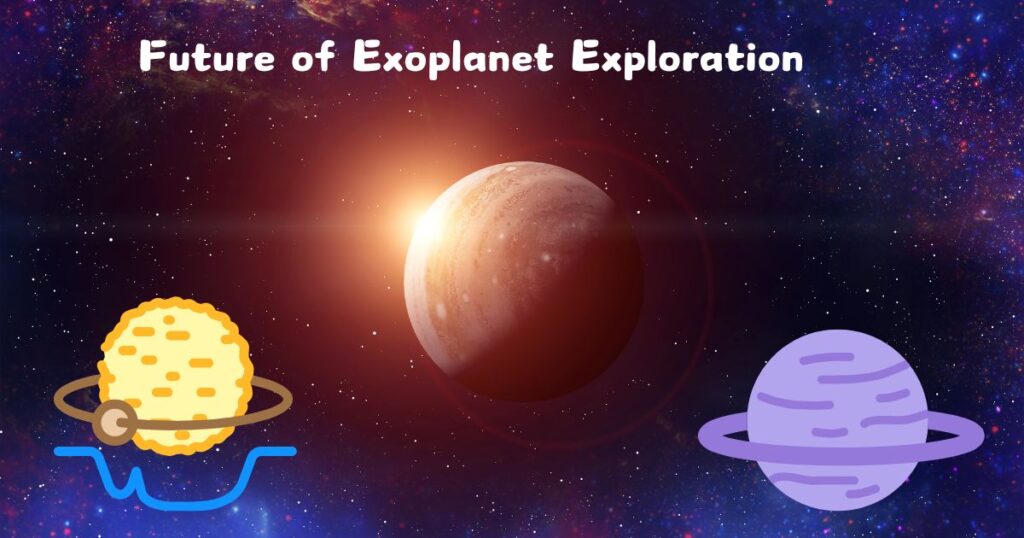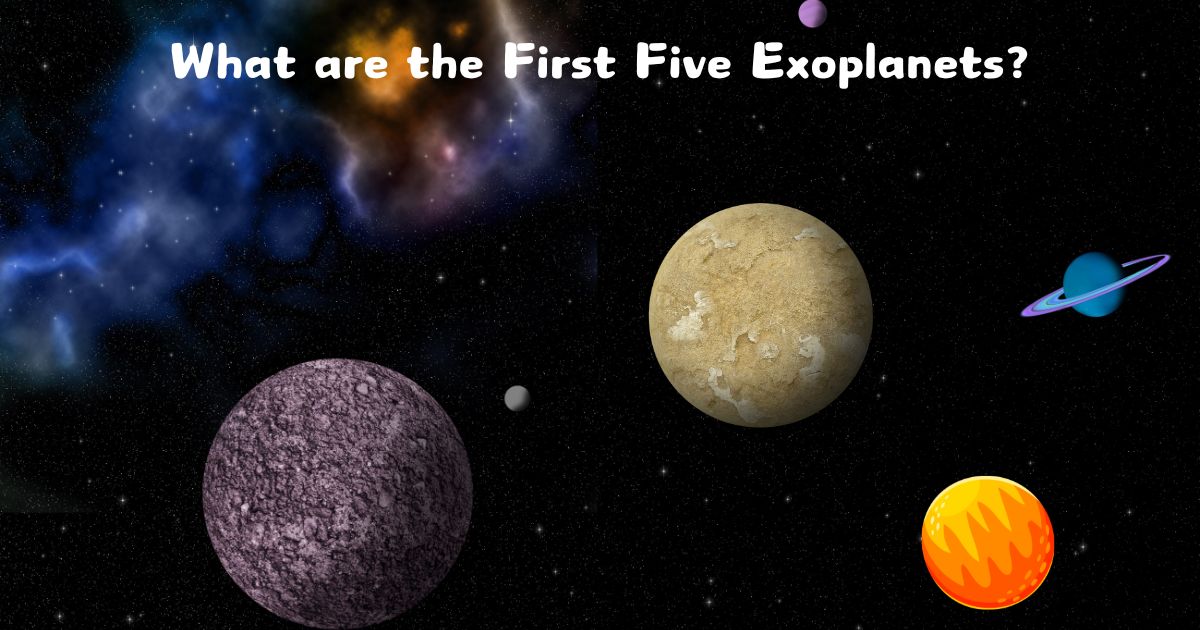Introduction
What are the First Five Exoplanets?
Exoplanets are planets that circle stars outside our solar system. For various years, people wondered if other planets existed around other stars, but it was only in the last few decades that technology has allowed us to find them. This discovery has opened up a new field of astronomy and helped us learn more around the universe.
| Exoplanet | Discovery Year | Discovery Method | Star Type | Characteristics | Significance |
|---|---|---|---|---|---|
| PSR B1257+12 B (Draugr) | 1992 | Pulsar Timing | Pulsar (PSR B1257+12) | Small planet | First exoplanet discovered; orbits a pulsar |
| PSR B1257+12 C (Phobetor) | 1992 | Pulsar Timing | Pulsar (PSR B1257+12) | Larger than Draugr | First exoplanet discovered; orbits a pulsar |
| PSR B1257+12 A (Poltergeist) | 1994 | Pulsar Timing | Pulsar (PSR B1257+12) | Larger than Phobetor | Showed planets can form in harsh environments |
| 51 Pegasi b | 1995 | Radial Velocity | Sun-like Star (51 Pegasi) | Hot Jupiter | First exoplanet around a Sun-like star; radial velocity method proof |
| HD 209458 b (Osiris) | 1999 | Transit | Sun-like Star (HD 209458) | Hot Jupiter | First transiting exoplanet; detailed atmospheric studies possible |
Key Takeaways
- First Proof of Exoplanets The revelation of the first five exoplanets proved that planets exist exterior our solar system and started a modern era in astronomy.
- Diverse Strategies Diverse strategies, counting radial velocity, transit, and pulsar timing, have been utilized to find exoplanets, each giving unique insights.
- Unique Characteristics The first five exoplanets appeared a wide range of sizes, circles, and temperatures, expanding our understanding of planetary systems.
- Significant Impact These discoveries have altogether progressed the field of exoplanet investigate and have motivated various missions and technological advancements.
- Ongoing Investigation The look for exoplanets continues, with future missions pointing to find Earth-like planets and signs of life beyond our solar system.
The Discovery of the First Five Exoplanets
The discovery of exoplanets has been a major milestone in astronomy. The first exoplanets were found utilizing different techniques that have since been refined and moved forward. These initial disclosures were crucial in proving that planets can exist exterior our solar system.
The First Five Exoplanets
Let’s take a closer see at the first five exoplanets that were discovered.
1. PSR B1257+12 B (Draugr) and PSR B1257+12 C (Phobetor)
Discovery
In 1992, astronomers found two planets, Draugr and Phobetor, circling a pulsar called PSR B1257+12. This was the first time planets were found exterior our solar system.
Characteristics
These planets are portion of a unique system since they circle a pulsar, which is a sort of neutron star that emits regular pulses of radiation. Draugr is the littlest of the three planets in this system, and Phobetor is a bit larger.
Significance
The discovery was groundbreaking because it appeared that planets could shape and exist indeed around the remainders of dead stars.
2. PSR B1257+12 A (Poltergeist)
Discovery
Also portion of the PSR B1257+12 system, Apparition was found in 1994.
Characteristics
Poltergeist is a bigger planet than Draugr and Phobetor and shares the same special environment of circling a pulsar.
Significance
This discovery set the truth that planets can survive and conceivably form in very cruel situations, expanding our understanding of planet formation.
3. 51 Pegasi b
Discovery
In 1995, Swiss space specialists Michel Mayor and Didier Queloz found 51 Pegasi b, the first exoplanet found circling a star comparative to our Sun.
Characteristics
51 Pegasi b is a “hot Jupiter,” meaning it is a gas giant comparative in size to Jupiter but much closer to its star. This makes it outstandingly hot.
Significance
This was the first exoplanet found utilizing the radial speed procedure, which measures the star’s wobble caused by the planet’s gravitational drag. This technique has since gotten to be a standard strategy in exoplanet discovery.
HD 209458 b (Osiris)
Discovery
Found in 1999, HD 209458 b was the to begin with exoplanet observed to transit its star, meaning it passes straightforwardly between its star and Earth.
Characteristics
Osiris is another hot Jupiter, with a near and very hot circle around its star. Its transit permits astronomers to think about its atmosphere.
Significance
The transit strategy, utilized to find Osiris, gives profitable information almost the planet’s size and atmosphere. This procedure has become fundamental in the study of exoplanets.
Methods of Discovery
Different strategies are utilized to discover exoplanets, each with its strengths and confinements. Here are the primary strategies utilized to find the first exoplanets.
Radial Velocity Method
How It Works
This strategy recognizes wobbles in a star’s movement caused by the gravitational drag of an circling planet. When a star moves towards or away from us, its light shifts slightly.
Example
51 Pegasi b was found utilizing this strategy. It measures the tiny changes in the star’s speed as the planet circles it.
Transit Method
How It Works
This strategy looks for dips in a star’s brightness caused by a planet passing in front of it. This transit blocks a little portion of the star’s light, making a detectable dimming.
Example
HD 209458 b (Osiris) was found this way. The transit gives data around the planet’s size, orbit, and atmosphere.
Pulsar Timing
How It Works
Pulsar timing includes identifying variations in the timing of pulses from a pulsar. If a planet circles the pulsar, it can cause slight changes in the entry times of the pulses.
Example
The planets in the PSR B1257+12 system were found utilizing this strategy. The exact consistency of the pulsar’s signals makes it conceivable to detect indeed little planets.
Characteristics of the First Five Exoplanets
The first five exoplanets have unique characteristics that recognize them from the planets in our solar system. Here is a comparison of their sizes, circles, and temperatures.
Sizes
These exoplanets range from littler than Earth to bigger than Jupiter. For example, Draugr is much littler than Earth, whereas 51 Pegasi b and HD 209458 b are comparative in size to Jupiter.
Orbits
Most of these planets have very near circles to their stars, resulting in brief orbital periods and high temperatures. For instance, 51 Pegasi b circles its star in just 4.23 days.
Temperatures
Due to their near vicinity to their stars, these exoplanets are extremely hot. The temperatures can extend from a few hundred to thousands of degrees Celsius.
Impact on Astronomy
The discovery of the first five exoplanets has had a critical affect on the field of astronomy.
Proof of Existence
These revelations given the first confirmation that planets exist exterior our solar system. This has led to the identification of thousands of exoplanets in different star systems.
Progression of Procedures
The procedures developed and refined during these discoveries, such as radial velocity and transit methods, have gotten to be standard instruments in exoplanet research.
Broadening Horizons
The discoveries have extended our understanding of planet arrangement and the differing qualities of planetary systems. They have appeared that planets can exist in a wide range of situations, including around pulsars.
Challenges in Exoplanet Discovery
Discovering exoplanets is not simple. There are numerous challenges that astronomers face in this field.
Distance
Exoplanets are very distant away from us. Most of them are hundreds or thousands of light-years away, making them troublesome to observe.
Size and Brightness
Exoplanets are much littler and dimmer than their parent stars. This makes it difficult to see them directly and requires modern strategies to detect their presence.
Interference
The light from a planet can be drowned out by the shinning light of its star. Astronomers require to utilize progressed strategies to isolated the light from the planet and the star.
Future of Exoplanet Exploration


